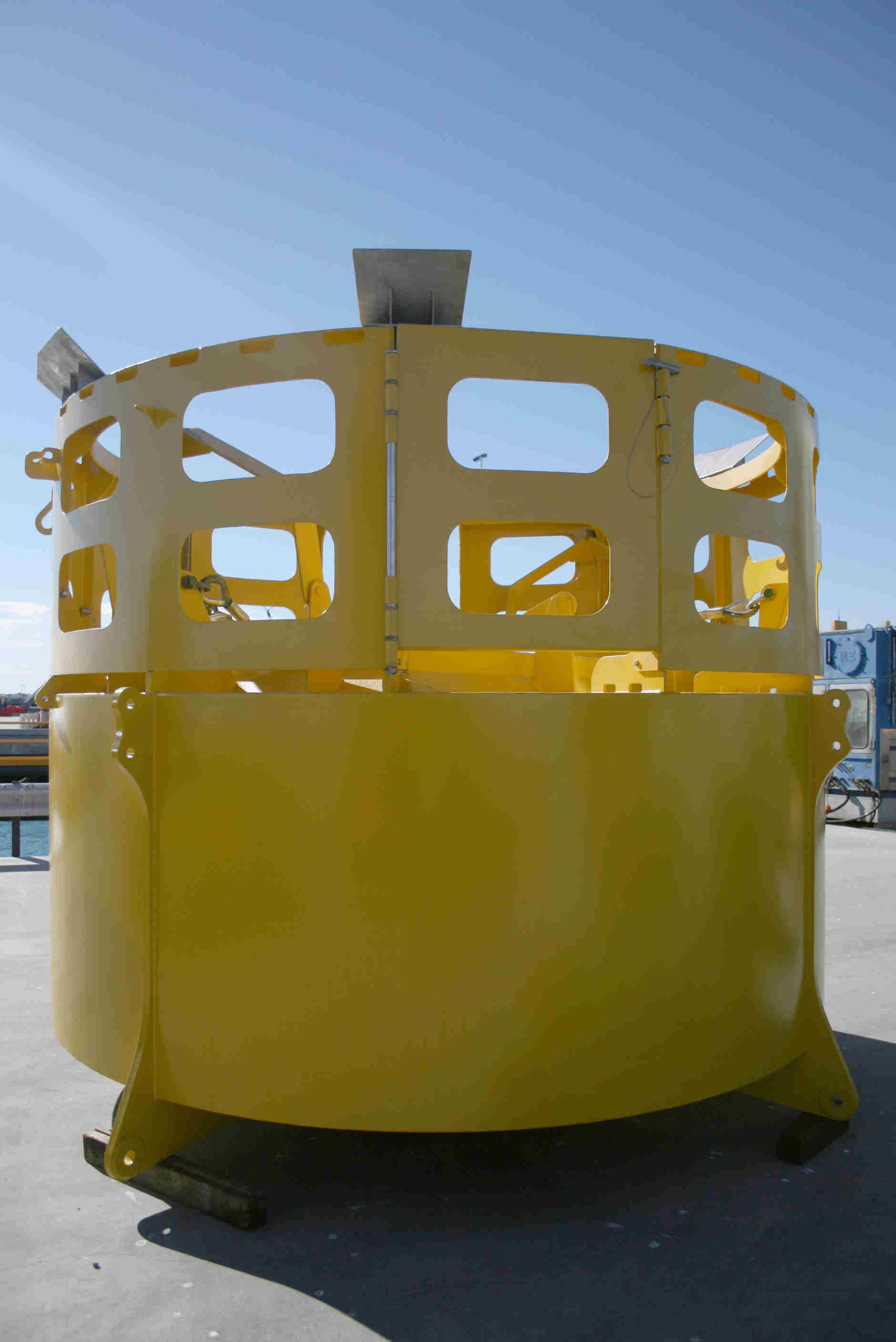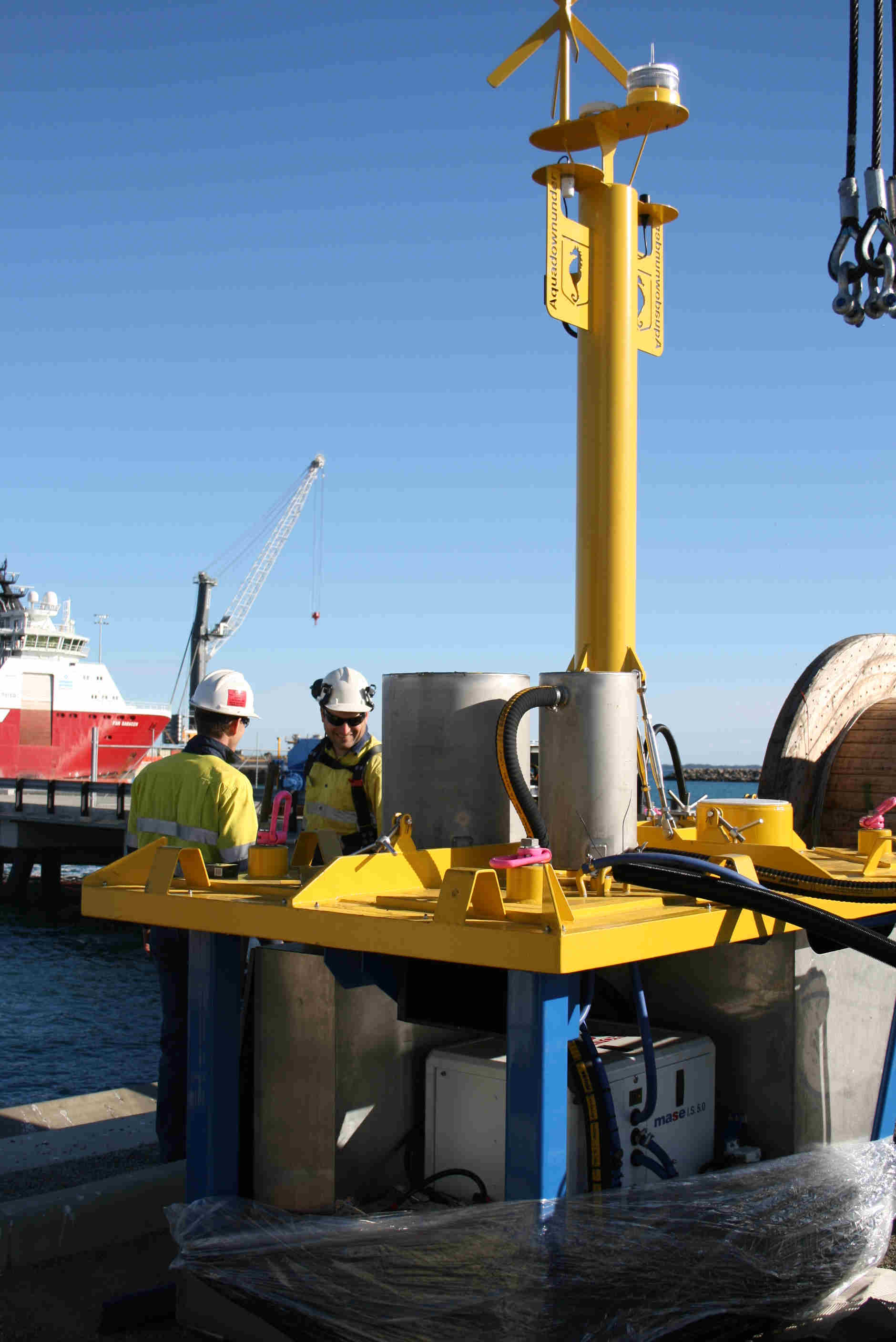March: Deepwater Power Point provides a power point and fibre optics to the seabed
By: Peter Mellor – Manager Ports Terminals and Marine Sciences, Worley Parsons
Industrial enterprises, scientific associations, and government organizations need to collect marine data to support critical missions for the digital oilfield, coastal security, and safety or at-risk environmental areas. Often, data needs to be collected from remote, isolated areas of the ocean. Users need a fully managed solution that enables the real-time delivery of collected data, while being portable for re-deployment in subsequent locations — saving operational costs and reducing deployment timelines.
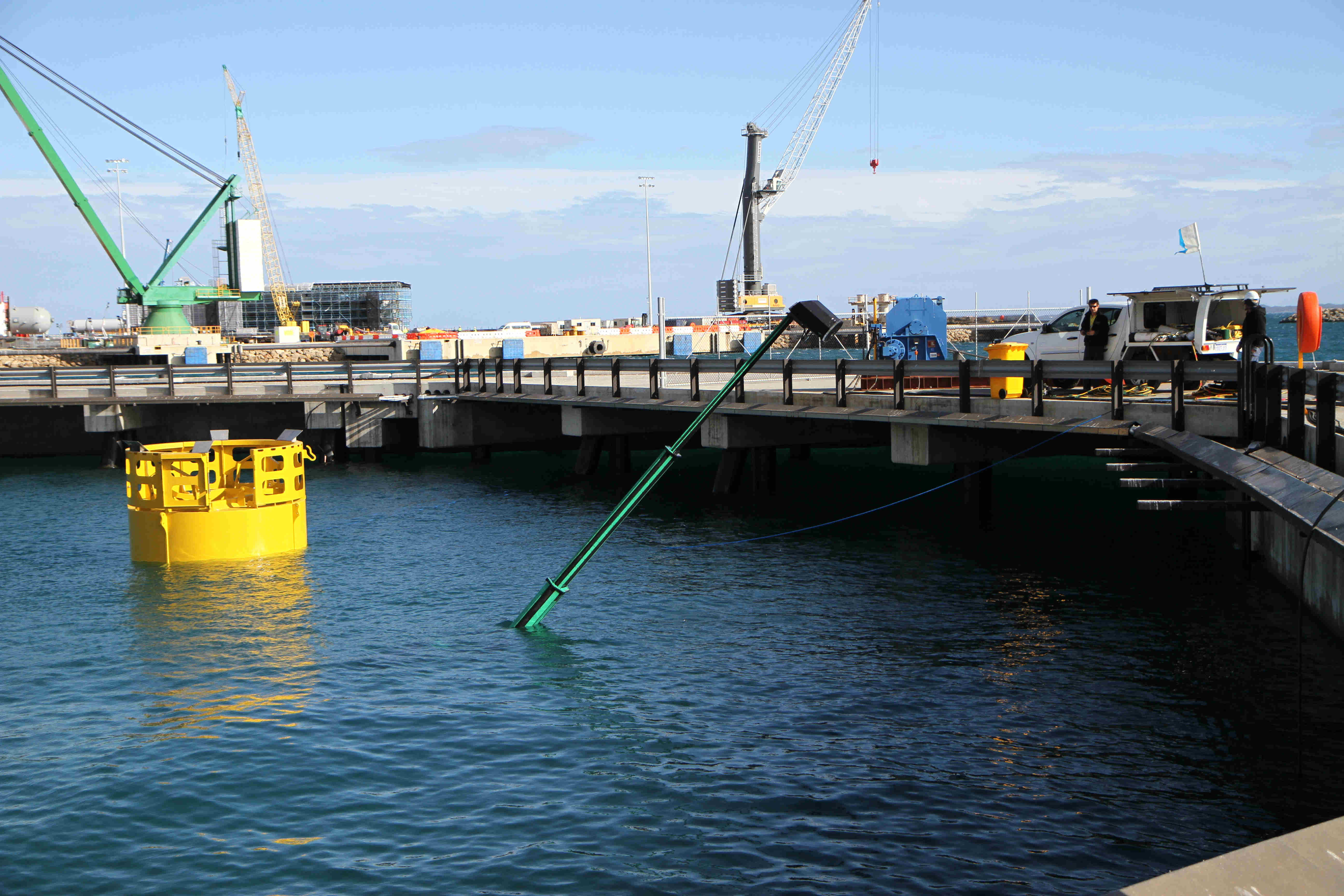 |
|
Figure 1. DPP deployed in the ocean powering WorleyParsons’ subsea robot (seen extending out of water). |
The Deepwater Power Point (DPP) from WorleyParsons was developed to act as a surface node for subsea fiber optic capability (Figure 1). The DPP comprises a buoy with a high-bandwidth data connection to a network of sensors and seafloor nodes. The buoys provide power and communications to the network of seafloor nodes, allowing real-time delivery of collected data to facilities anywhere around the globe.
Delivered as a fully managed, turnkey solution, users are able to focus on analyzing the data collected and thus gain deeper insights into remote operations. The solution supports dataintensive collection, so bandwidth limitations are less likely to constrain the user’s data collection ability. The DPP could lead to potential discoveries or collaboration between many different disciplines in the marine environment. The buoy can be deployed in marine or other aquatic environments to support ocean observatories, portable subsea mining equipment, or other subsea equipment with a large power load.
The buoy comes as two parts; Part 1 is the outer skin and railing (Figure 2). Completely foam-filled, this part is almost unsinkable. Part 2 is the inner skid (Figures 3 and 4). The inner skid houses the fuel, generator, and electronics board (including industrial PC, various PLCs, and other requirements applicable to the subsea asset). The industrial PC runs Windowsbased software, and, as such, most software is easily configurable, reducing the requirement for custom code development. To date, telecommunications to the buoy are via Wi-Fi, 3G, and satellite. WorleyParsons is investigating WiMAX or 4G LTE to increase the DPP functionality.
The DPP protection from vessel collisions is impressive: it is designed to be hit by a bulk carrier and pop up the other side. The pneumatic fenders dissipate the initial impact (and also provide vessel protection when alongside), while the mast is designed to snap off and the railing to fold over and protect the buoy. The intake and outlet for the exhaust sits within an air trap, allowing the buoy to be submerged and still workable once surfaced. The umbilical has a controlled break point should the buoy get caught up in a vessel — thus protecting the subsea asset. The DPP has also been designed to withstand cyclones and can be submerged for short durations. The buoy meets navigational hazard requirements including a radar reflector, satellite tracking, St. Andrews cross, lighting, etc.
The DPP measures metocean conditions using in-built accelerometers, monitors its fuel status, and can be configured to record data from a variety of other sensors according to the end user application. The buoy can be configured to wake on demand, on a schedule, or stay on permanently depending on the user’s requirements.
Using in-built PLCs, the buoy wakes at set times and starts a marine-grade generator. The generator provides 120 to 240V at 4.8 kW (continuous). The buoy has a battery bank that is charged simultaneously but also stays permanently awake, providing power to vital components. The generator works to an angle of 30° incline. An in-built accelerometer prevents it from starting in rough sea states. A fuel reservoir within the buoy has 250-L diesel capacity and is triple bunded.
Railings and anti-skid surfaces mean the buoys can be boarded and worked on offshore. Additionally, the buoy has two access points, enabling access from the operationally preferable side.
The DPP can be refuelled through the lid of the skid in situ, or the skid can be removed for servicing, upgrades, and refuelling without affecting the mooring or its position. Hardware upgrades or modification are easily switched out offshore rather than returning to shore or recovering the mooring.
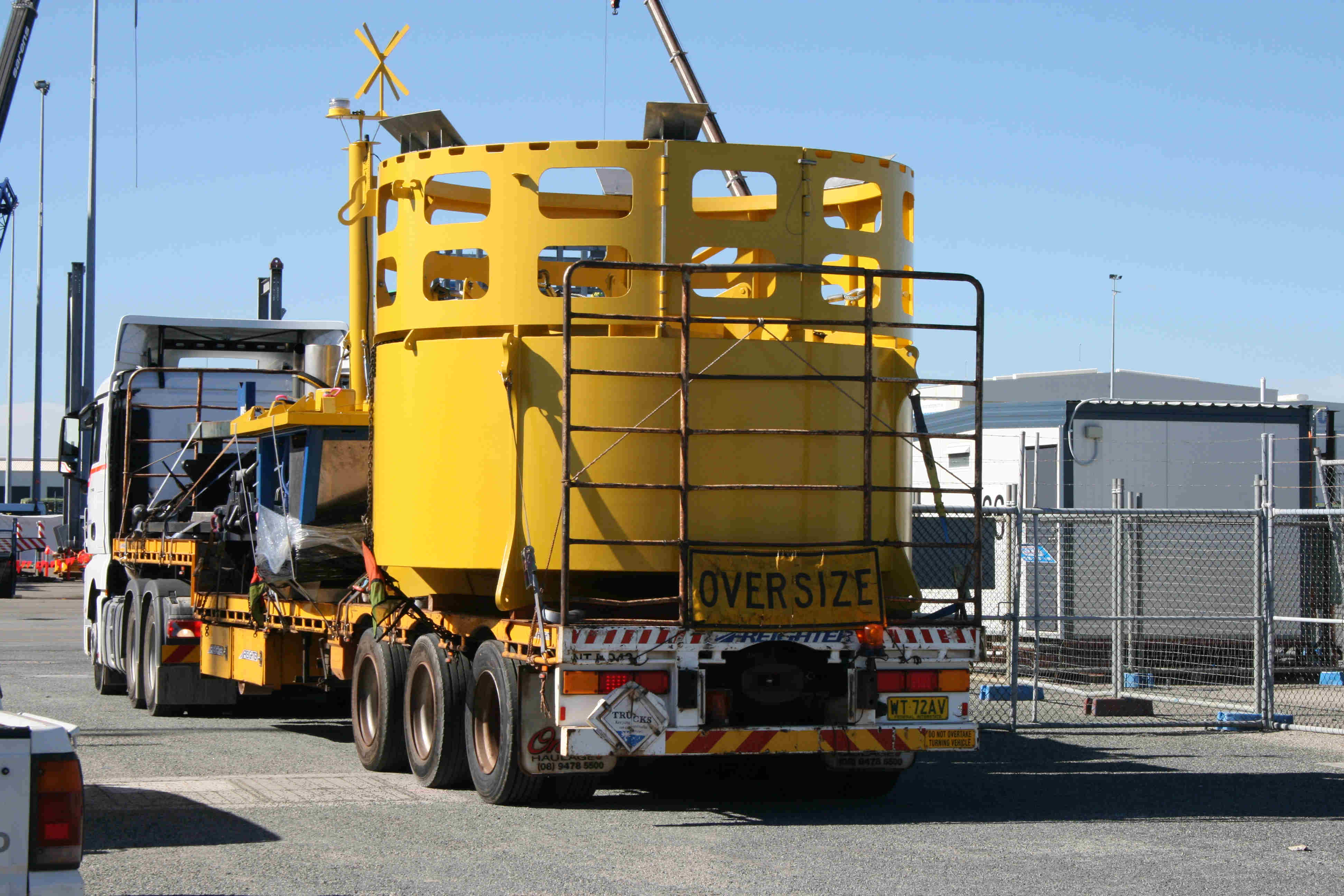 |
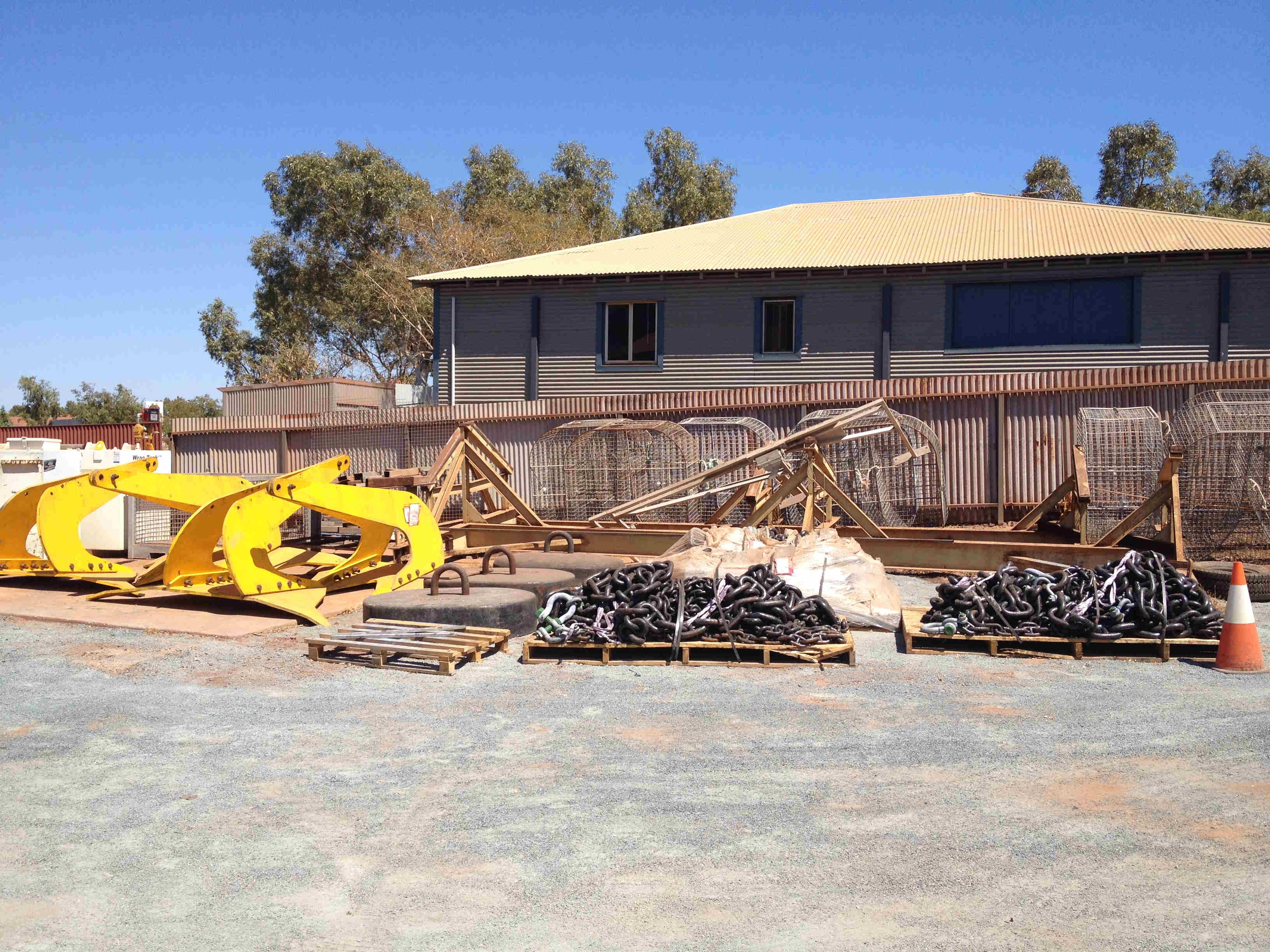 |
 |
| Figure 5. The mooring equipment. |
Figure 6. Logistically, the DPP fits on an unescorted load. |
Figure 7. The triple-armoured |
While mooring configurations are unique for each site, the team has currently deployed in 12 m LAT with a sea range of an additional 20 m, if you allow for tide, swell, and storm surge — making it a particularly challenging site. Mooring configurations for deeper depths become easier due to more favourable catenary action of the mooring lines (Figure 5).
The DPP currently relies on hybrid cables for electricity and fiber optic communications as well as retrieval and deployment of the subsea asset, having triple armouring and a 440 kN breaking load. The buoy’s standard umbilical provides fiber optic and 240/120V to the seabed and telemetry to the shore (Figure 7). All external cables subsea are isolated and wet mateable. The umbilical can be disconnected without affecting the skid seal. In fact, the umbilical can be removed and dropped to the seabed and the buoy moved to a different asset as required (Figure 6). Data can be downloaded remotely anywhere in the world.
Among the different offshore activities related to remote control of subsea assets, one of the most active is subsea optics as developed in the DPP. The superior solution of the DPP is its ability to be left on site for the life of the asset, whether for a short drilling campaign or a full field deployment on an isolated control node.
For more information, email peter.mellor@worleyparsons.com.

